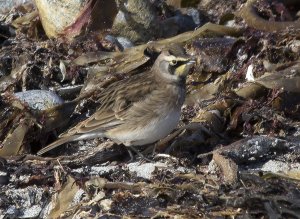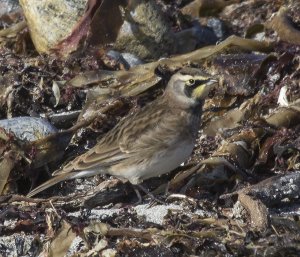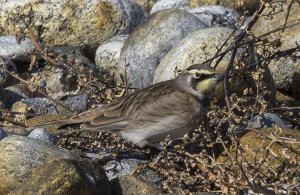Hawkeye
Eyes and Ears Everywhere
The British Ornithologists’ Union Records Committee (BOURC) has added the the North American Horned Lark found at Askernish, South Uist on 9th October 2014 to the British List.
In their press release the BOURC stated the following:
North American’ Horned Lark Eremophila alpestris (alpestris/praticola/hoyti)
First-calendar-year or older, Askernish (Aisgernis), South Uist (Uibhist a Deas), Outer Hebrides, 9-14 October 2014 (photographed).
Plumage features indicate that the Outer Hebrides individual was one of the North American subspecies of Horned Lark, and not a European Shore Lark E. a. flava. Key features included the reduced amount of yellow in the ear coverts and face which distinguishes such birds from E. a. flava.
The probability of this individual being an escape from captivity was judged to be very low, and the subspecies group has been recorded previously elsewhere in the Western Palearctic as a trans-Atlantic vagrant.
Of the many North American subspecies, three have a north-east distribution and display movements between breeding and non-breeding areas: E. a alpestris, E. a. praticola and E. a. hoyti.
Of these only nominate E. a. alpestris has an east Canadian breeding range and makes large movements along the east coast to winter in south-east USA, and so seems the most likely as a trans-Atlantic vagrant. However, E. a. praticola and E. a. hoyti also have an eastern range and so cannot be discounted with certainty. Thus the subspecies group (alpestris/praticola/hoyti) was accepted to Category A.
Horned Lark is polytypic, breeding across North America south to Central and northern South America. Some populations, particularly in the north of the range, are migratory with significant movements between summer breeding and winter areas; others are either resident or partially migratory. Shore Lark is also a polytypic breeding species across the Palearctic region.



In their press release the BOURC stated the following:
North American’ Horned Lark Eremophila alpestris (alpestris/praticola/hoyti)
First-calendar-year or older, Askernish (Aisgernis), South Uist (Uibhist a Deas), Outer Hebrides, 9-14 October 2014 (photographed).
Plumage features indicate that the Outer Hebrides individual was one of the North American subspecies of Horned Lark, and not a European Shore Lark E. a. flava. Key features included the reduced amount of yellow in the ear coverts and face which distinguishes such birds from E. a. flava.
The probability of this individual being an escape from captivity was judged to be very low, and the subspecies group has been recorded previously elsewhere in the Western Palearctic as a trans-Atlantic vagrant.
Of the many North American subspecies, three have a north-east distribution and display movements between breeding and non-breeding areas: E. a alpestris, E. a. praticola and E. a. hoyti.
Of these only nominate E. a. alpestris has an east Canadian breeding range and makes large movements along the east coast to winter in south-east USA, and so seems the most likely as a trans-Atlantic vagrant. However, E. a. praticola and E. a. hoyti also have an eastern range and so cannot be discounted with certainty. Thus the subspecies group (alpestris/praticola/hoyti) was accepted to Category A.
Horned Lark is polytypic, breeding across North America south to Central and northern South America. Some populations, particularly in the north of the range, are migratory with significant movements between summer breeding and winter areas; others are either resident or partially migratory. Shore Lark is also a polytypic breeding species across the Palearctic region.


